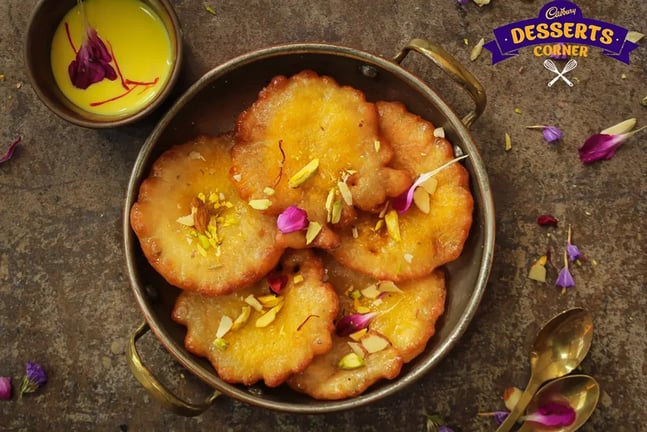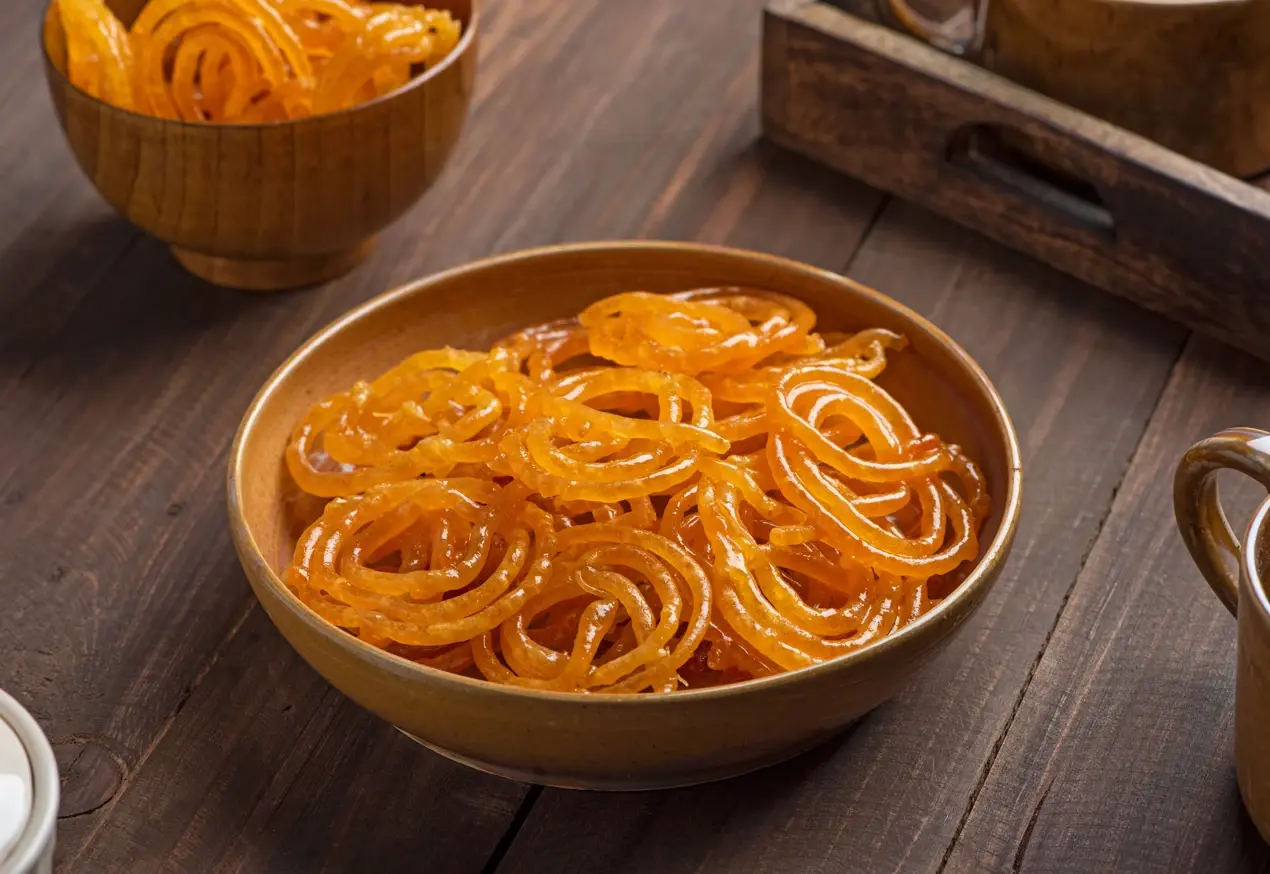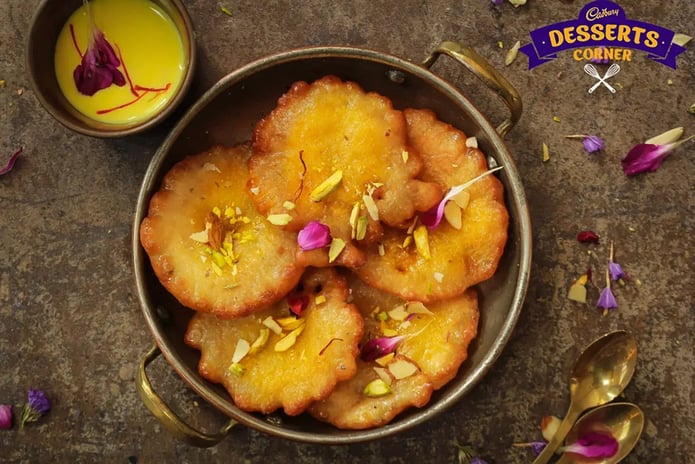- Home
- Articles
- The Long History of the Malpua, India’s Oldest Dessert, With Innumerable Variations and Varieties Today
For a dish to stick around as long as the malpua has, it has to be open to experimentation and personalization. Here’s a low down on how India eats the malpua.

For a dish to stick around as long as the malpua has, it has to be open to experimentation and personalization. Here’s a low down on how India eats the malpua.
Round, flat and dipped in a sugar syrup, malpuas are a delectable dessert, which originated from the Indian subcontinent. They stand as strong contenders against other popular desserts for the spot of most beloved Indian dessert. While that debate continues, the malpua’s claim to fame is that it is the oldest dessert in the Indian subcontinent.
The oldest and most important of the four Vedas, the Rig Veda is a collection of Sanskrit hymns. It also contains the first written record of the malpua, as mentioned by food historian Om Prakash in his book Food and Drinks of Ancient India: From Earliest Times to C.1200 A.D. He says that pua or apupa were “cakes made of rice or barley meal cooked in clarified butter on slow fire”. Other ancient texts mention dishes that were “stuffed with fried wheat flour”, or “prepared with the addition of milk and juice of sugarcane”. In his book A Historical Dictionary of Indian Food, food historian KT Achaya mentions that the Buddhists used broken rice to make the dish, and called it ‘kanapuvam’. Although there are slight variations, the essence of the dish remains the same.

Malpuas’ long history takes us to Odisha, where the Jagannath temple records offer insights about the dish. It was seemingly introduced during king Gajapati Prataparudra Deva’s reign, who in turn was influenced by the saint Chaitanya Mahaprabhu. It’s thus believed that since the early 16th century, it was part of the chappan bhog at the temple, where it’s called amalu. In the temple’s evening rituals or sandhya dhoopa, three types of amalu are offered to the deities. It’s also present during special occasions like makar sankranti, pausa purnima, nabanna, and snana purnima. It’s also offered to Lord JAgannath’s wife, goddess Bimala, during navratri.
During the Mughal reign, egg and mawa or khoya were added to the dish. The tradition continues today during Eid. in Mumbai, during Ramdan month, the Bohris make an egg malpua, often served with malai on the side. It’s also served this way in Pakistan.

Different parts of India also treat the dessert differently, depending on locally established traditions that have evolved over time. For instance, Rajasthan makes a rabdi malpua, the batter being an amalgamation of rabdi and flour. In the east, semolina, fennel seeds and cardamom are added to the batter for added flavor. In coastal Odisha, coconut is included in the batter and sometimes, even taala palm fruit. In Bengal, when they are in season, sweet potato is added to the batter, called ranga aloor malpua. In Bihar, it’s called pua, is served with chicken or mutton curry, and is enjoyed during Holi. in Lucknow, milk is reduced to a kheer-like consistency, and mixed with khoya and flour, to prepare the batter. On the streets of Bhubaneshwar, malpua is served with a side of spicy alu kassa, which is an aloo sabji, and topped with sev.
The malpua is also popular in several south Asian countries besides India, like Bangladesh, Nepal and Pakistan, each tweaking it to suit their taste buds. For instance, Bangladesh includes mashed bananas in the batter of the malpuas. And in Nepal, it’s called marpa and is made with bananas and fennel seeds, and some pepper, which balances the sweetness of the milk and sugar.

Here’s a simple recipe of the malpua to try your hands at.
Ingredients
For the malpua batter
- 1 cup all-purpose flour
- 1 tsp fennel seeds
- 4 green cardamoms, crushed
- ⅛ tsp baking soda
- ½ cup water
- 3 tbsp khoya
- 3 tbsp curd
For frying the malpua:
- 4 tbsp ghee
For the sugar syrup
- ½ cup sugar
- ¼ cup water
Instructions
- In a bowl, mix the flour, fennel seeds and cardamom powder.
- Add the khoya and curd.
- Add water and stir, removing all lumps.
- Cover batter and set aside for 30 minutes.
- Soak almonds and pistachios in hot water for 20 minutes. Then peel and slice. Set aside.
- In a pan, add the sugar and water. Stir so the sugar dissolves and let the mixture simmer. The sugar syrup should have a stringy consistency. Set it aside on a hot water bath. If left cool it will crystallize.
- Heat ghee in a pan.
- Add baking soda to the batter and pour a spoonful into the pan. Fry on low to medium heat.
- Once both sides are golden, place the malpua in the sugar syrup.
- When it has soaked in the syrup, transfer to a serving plate. Repeat until all the batter is used up.
- Pour rabdi on top and garnish with chopped nuts. Serve hot.
Like This Article?
More Like This



Popular Articles





Trending Web Stories
Curated Recipes



















